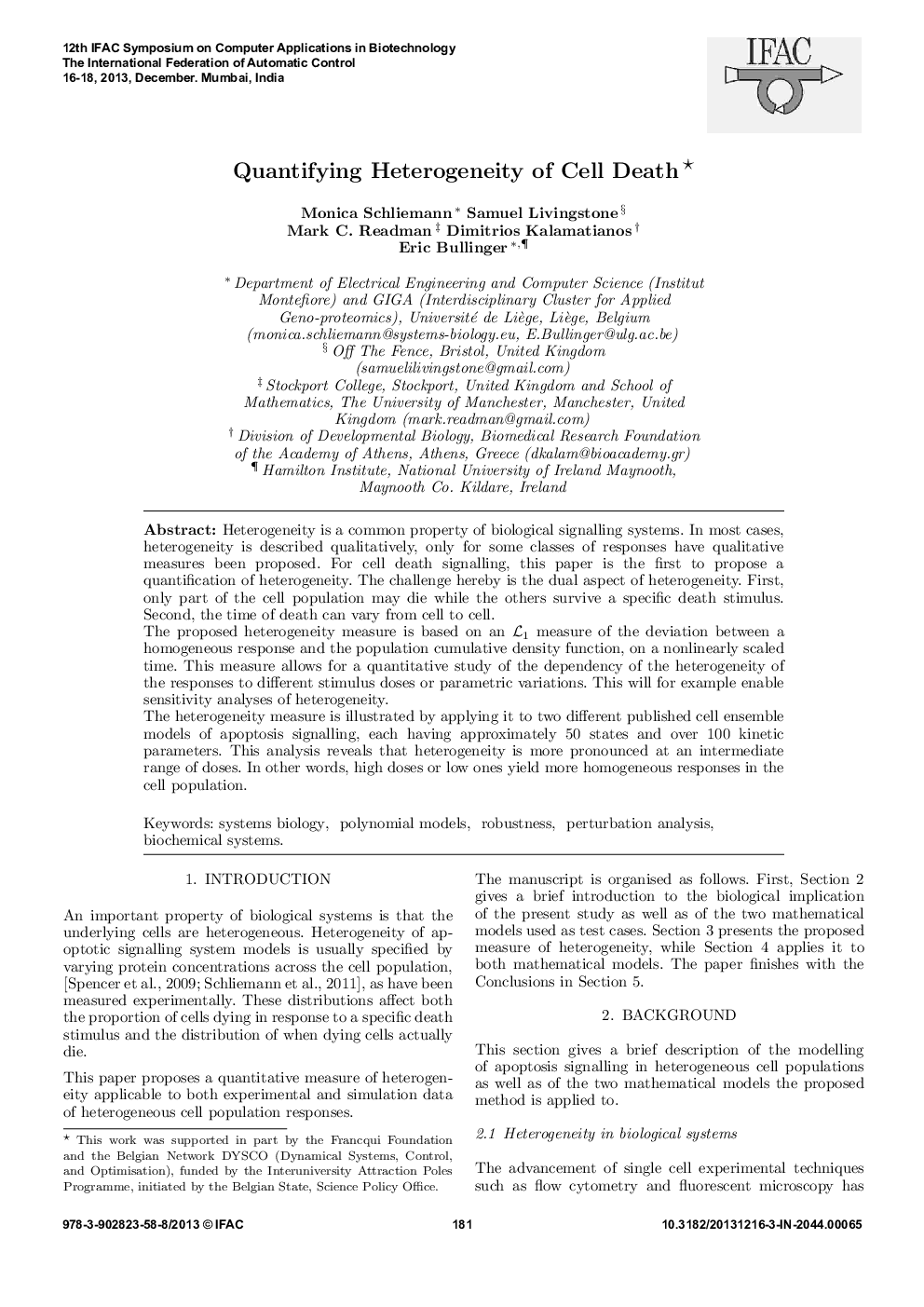| Article ID | Journal | Published Year | Pages | File Type |
|---|---|---|---|---|
| 713969 | IFAC Proceedings Volumes | 2013 | 6 Pages |
Heterogeneity is a common property of biological signalling systems. In most cases, heterogeneity is described qualitatively, only for some classes of responses have qualitative measures been proposed. For cell death signalling, this paper is the first to propose a quantification of heterogeneity. The challenge hereby is the dual aspect of heterogeneity. First, only part of the cell population may die while the others survive a specific death stimulus. Second, the time of death can vary from cell to cell.The proposed heterogeneity measure is based on an ℒ1 measure of the deviation between a homogeneous response and the population cumulative density function, on a nonlinearly scaled time. This measure allows for a quantitative study of the dependency of the heterogeneity of the responses to different stimulus doses or parametric variations. This will for example enable sensitivity analyses of heterogeneity.The heterogeneity measure is illustrated by applying it to two different published cell ensemble models of apoptosis signalling, each having approximately 50 states and over 100 kinetic parameters. This analysis reveals that heterogeneity is more pronounced at an intermediate range of doses. In other words, high doses or low ones yield more homogeneous responses in the cell population.
